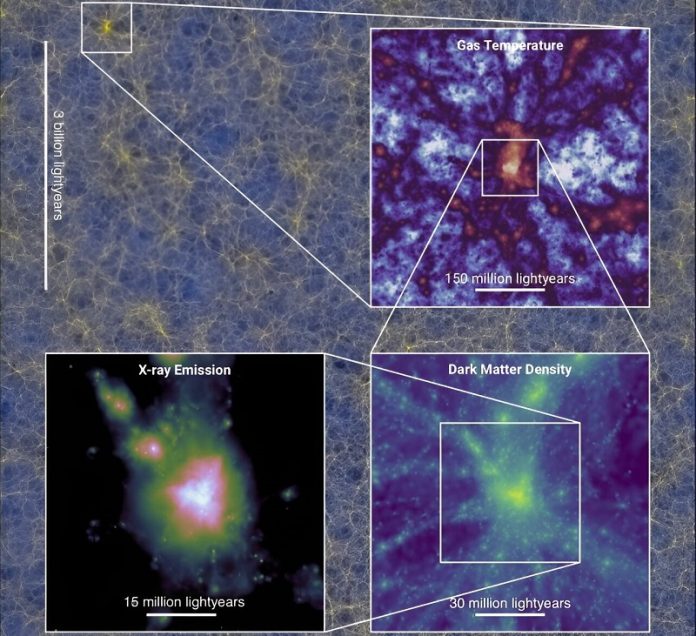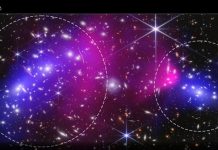
In a groundbreaking achievement, a team of international astronomers has carried out the biggest computer simulation about our universe.
Think of it as a super detailed video game where they recreated how our universe might have formed and evolved. This effort is named the FLAMINGO simulations.
Now, you might be asking, why do this?
Well, have you ever tried fitting a puzzle piece and found it doesn’t quite fit? Scientists have some pieces of the puzzle about our universe that don’t fit together perfectly.
So, they used this massive computer simulation to try to understand why.
Here’s the thing: our universe is made up of ordinary stuff like planets, stars, and galaxies.
But there’s also mysterious stuff called dark matter and dark energy, which we can’t see directly. Most of our universe is actually made of this dark matter.
However, for a long time, when scientists tried to simulate our universe, they only included this invisible dark matter. But this new FLAMINGO simulation adds in the ordinary stuff too.
Joop Schaye, the leader of this research from Leiden University, said that even though this ordinary stuff makes up a small part of our universe, it’s crucial.
It’s a bit like adding the right amount of a secret ingredient in a recipe; without it, the dish just doesn’t taste right.
But simulating this ‘ordinary stuff’ is not easy. Why? Because it’s affected by many things.
For instance, massive explosions from stars can blow this matter right out of galaxies into the vastness of space. Plus, there are these tiny particles called neutrinos.
They’re super light and super tricky to track, but they play a role in the universe’s evolution.
To make their computer model as close to reality as possible, the team made lots of mini-simulations.
They used something called machine learning (a type of artificial intelligence) to refine their main simulation. Think of machine learning as teaching a computer to get better at a task by practicing over and over.
The most impressive part? Their largest simulation had 300 billion resolution elements.
That’s like having 300 billion super tiny Lego pieces to build a vast model of the universe. This took place in a virtual space that’s ten billion light-years on each side.
That’s a space so massive; it’s hard to even imagine! And to manage this, they created a new computer code named SWIFT. It’s like a new language the computer understood to do this massive job.
This FLAMINGO project gives us a new way to “see” our universe. It’s like having a super telescope, but inside a computer. With this tool, scientists hope to solve the puzzle about how our universe works.
They’re even using machine learning to predict how random virtual universes might look. By comparing these predictions to what we see in the real universe, they hope to answer big questions about our cosmic home.
In summary, the FLAMINGO simulations are like a giant, detailed virtual universe inside a computer.
By understanding this virtual universe, scientists hope to get clearer insights into our real universe. And who knows, this could lead to discoveries we haven’t even imagined yet!
Follow us on Twitter for more articles about this topic.



